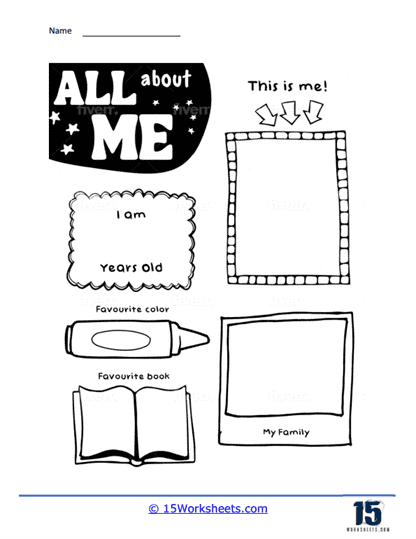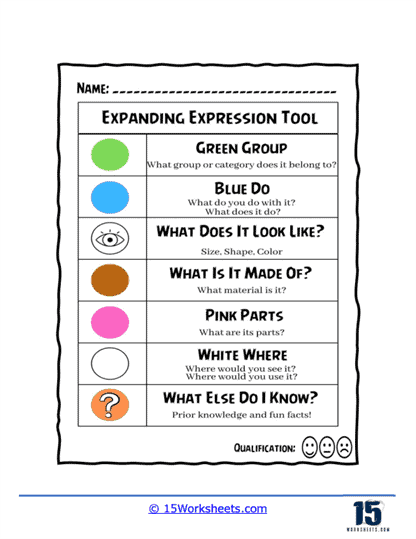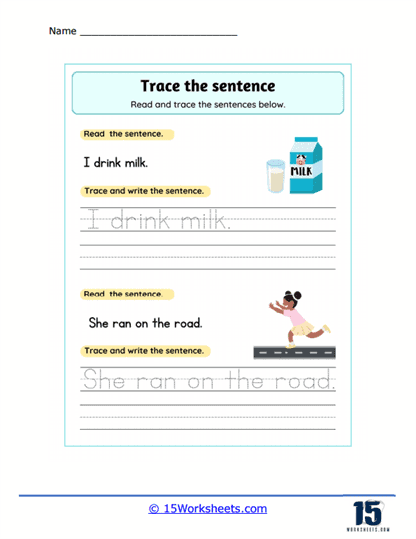Writing Worksheets
What Are Preschool Writing Worksheets?
Preschool writing worksheets are educational resources designed to help young children, typically aged 3 to 5, develop and practice their writing skills. These worksheets often feature a variety of activities aimed at teaching children the basics of writing, such as letter recognition, letter formation, and early handwriting practice. They may include activities such as:
Tracing Letters – Children trace the outline of letters to become familiar with their shapes and proper formation.
Writing Letters – Worksheets may provide lines or boxes for children to practice writing letters independently.
Letter Recognition – These activities help children identify and differentiate between uppercase and lowercase letters.
Connecting Letters to Sounds – Worksheets may pair letters with pictures or words that start with the corresponding letter sound to reinforce the connection between letters and their sounds.
Word Formation – Simple words or short phrases can be used to help children practice combining letters to form words.
Fine Motor Skill Development – Activities like coloring, cutting, and pasting can help children develop the fine motor skills needed for writing.
Preschool writing worksheets should be engaging and age-appropriate, often incorporating colorful images, playful themes, and fun characters to keep children interested and motivated. These worksheets are typically used by parents, caregivers, and teachers as a supplementary tool to help children build a strong foundation in writing before they enter kindergarten.
Tips For Improving Preschooler Writing Skills
Improving preschooler writing skills involves a combination of activities and techniques that focus on developing fine motor skills, letter recognition, and confidence in writing. Here are some strategies to help improve a preschooler’s writing skills:
Encourage Proper Grip – Teach children the correct way to hold a pencil, crayon, or marker to improve control and stability while writing.
Strengthen Fine Motor Skills – Engage children in activities that develop their fine motor skills, such as playing with playdough, stringing beads, using scissors, or doing finger painting.
Use Tracing Activities – Provide worksheets or printables with letters, shapes, and simple words for children to trace, helping them become familiar with letter formation.
Practice Letter Recognition – Use flashcards, puzzles, or games to help children identify and differentiate between uppercase and lowercase letters.
Connect Letters to Sounds – Teach children the sounds that correspond to each letter, using songs, rhymes, or games to make learning enjoyable.
Encourage Independent Writing – Give children opportunities to practice writing on their own, using lined paper, whiteboards, or chalkboards.
Provide a Variety of Writing Tools – Offer different writing instruments like pencils, crayons, markers, and chalk to keep children engaged and interested in writing.
Create a Writing-rich Environment – Surround children with written materials like books, posters, and labels to reinforce the importance and value of writing.
Make Writing Fun – Incorporate writing activities into playtime, such as writing letters in shaving cream, drawing in sand, or using water and paintbrushes on the sidewalk.
Offer Praise and Encouragement – Celebrate children’s progress and efforts, providing positive feedback to boost their confidence and motivation.
Be Patient – Understand that each child develops at their own pace and that it’s essential to create a supportive and stress-free environment to foster their writing skills.
By incorporating these strategies into a preschooler’s daily routine, you can help them build a strong foundation for writing and set them up for success as they enter kindergarten and beyond.




